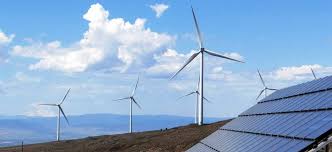China had been focused on economic development without paying much attention to the associated ecological impact until a few years ago as pollution deteriorated to alarming levels. Since China is the world’s top producer of coal, naturally it has been the top consumer of this energy fuel, mainly for generating electricity to support rapid economic growth. However, the burning of coal (a form of fossil fuel fuels that also include crude oil) released a number of airborne toxins and pollutants such as carbon dioxide and sulfur dioxide, which are hazardous to the environment causing acid rain and global warming and linked to the increasing prevalence of asthma, cancer, heart and lung diseases. After realizing the negative environmental and social impact, China has decided to change the mix of its energy sources, shifting to renewables for power generation.
Unlike coal, renewables such as wind, solar and hydro energy produce zero emissions and their supplies are theoretically infinite though subject to the Mother Nature. Moreover, the renewables are free from geopolitics, allowing China to achieve energy independence. China has made progress in its transition to renewables, with coal accounting for 60% of the country’s energy mix in 2017, a dramatic decline from 80% in 2010.
Following the expiration in 2017 of the Air Pollution Prevention and Control Action Plan, the first plan with air quality goals set and issued in 2013, China’s State Council released the Three-Year Action Plan for Winning the Blue Sky War (“Three-Year Action Plan”) in June 2018, indicating the government’s continued commitment to tackling air pollution by increasing the consumption of renewable energy. The Three-Year Action Plan stipulates that sulfur dioxide and nitrogen oxide emissions to be reduced by at least 15% compared with 2015 by 2020.
China’s determination to develop its renewable energy is evident by the fact that it accounted for three quarters of Asian renewable energy production and was the global leader as of 2016, producing more renewable energy than all European countries combined, according to data from the International Renewable Energy Agency. In contrast, Japan, while a highly developed economy, only managed to produce one-tenth of China’s renewable energy output. China amassed a total production of 1,522,586 gigawatt hours (GWh) of renewable energy, significantly exceeding the output of 637,076 GWh and 465,579 GWh by the U.S. and Brazil respectively.
Among all sources, hydropower contributed the bulk of China’s total renewable output in the amount of 1,193,370 GWh in 2016. China has also effectively harnessed wind energy, which was its second leading source of renewable energy, accounting for 242,388 GWh in 2016. It represented more than 82% of the 294,506 GWh total wind energy production by Asian countries. Meanwhile, Europe fared best in wind energy output globally, with Germany and Spain taking the first and second spots respectively worldwide.
However, for solar energy and renewable energy from municipal waste, China took the crown, while it ranked second globally in the production of bioenergy (from plants, animals and their byproducts), trailing only Germany.
China’s 13th Five-Year Plan (2016-2020) promotes wind, solar, and biomass energy capacity expansion and connection through government’s support nationwide. In addition, the Chinese government will also continue to invest in new hydropower, energy storage and nuclear power projects, as well as further constructing smart grid and ultra-high-voltage power-transmission networks for the distribution of renewable energy.





The Belt and Road Initiative is Embracing Future Globalization